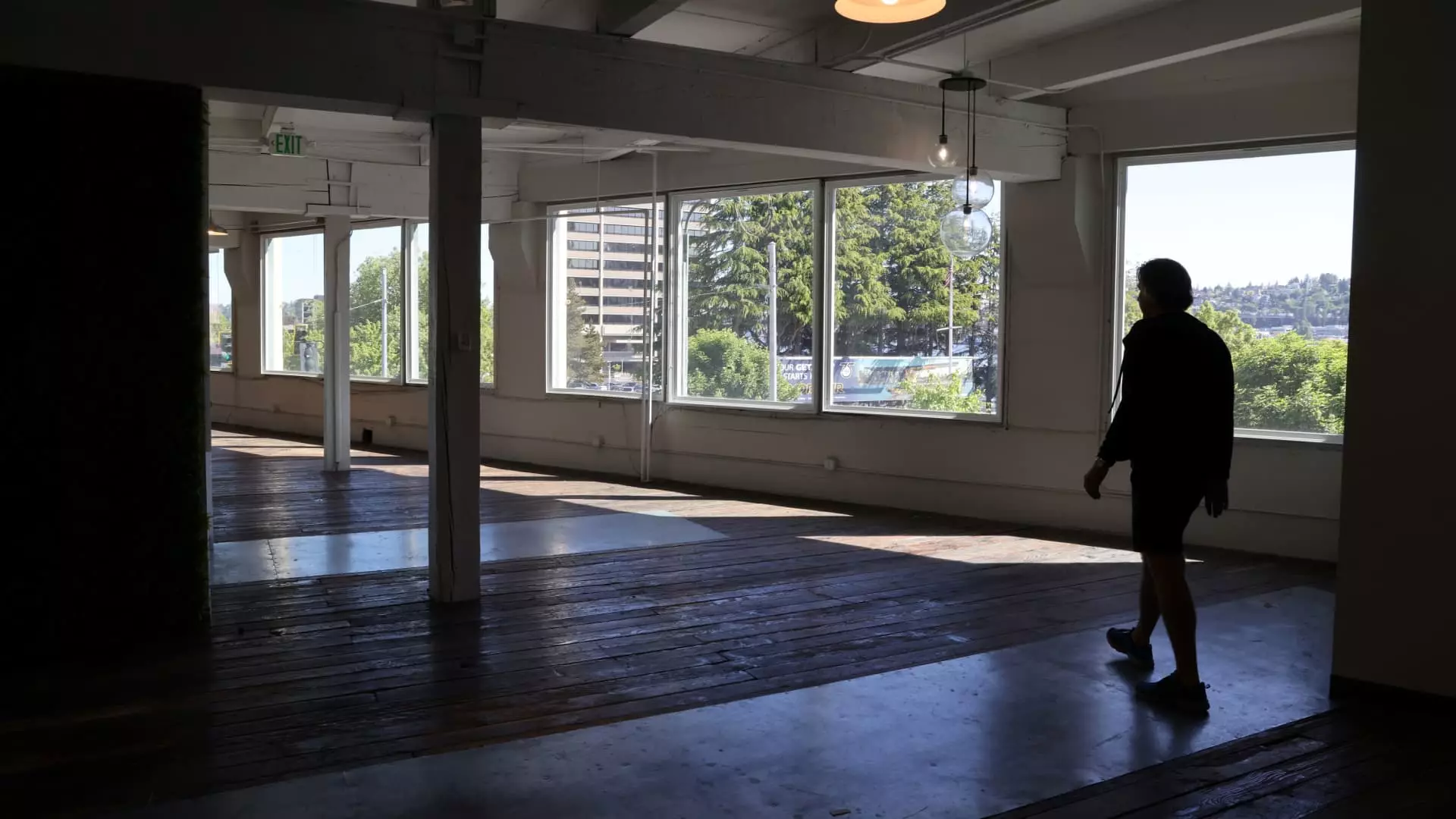In recent years, the U.S. office market has undergone a transformation that, while troubling to some, is truly a necessary evolution. After enduring years of distress driven largely by the pandemic’s acceleration of remote work, we are finally witnessing a critical turning point. For the first time in a quarter-century, the total amount of office space being repurposed or demolished will surpass new construction. This drastic reality shift is a clear reflection of our changing work culture and the urgent need to address the surplus of underutilized office spaces.
The statistics are alarming yet revealing. According to the data from CBRE Group, a leading commercial real estate services firm, 23.3 million square feet of office space are earmarked for repurpose or demolition this year, overshadowing the mere 12.7 million square feet projected for new builds. Such a significant overbalance in demolitions and conversions evidences a realization that the old paradigm of office space no longer suits the new world we inhabit. The commitment to adaptability isn’t merely a trend; it’s a survival mechanism for a market in crisis.
Economic Forces at Play
The impetus for this change can be traced back to a radical shift in workplace expectations and dynamics. With vacancies hitting a record high of approximately 19%, the desperation was palpable. Yet, as corporations inch their way back to full office occupancy, the narrative is shifting again. Employers are calling workers back, and with labor markets tightening, employees are increasingly compliant, albeit reluctantly. It appears that the pendulum is swinging back towards a semblance of normalcy, yet the “normal” we return to is anything but traditional.
Despite the apparent recovery in office-leasing activity—an 18% increase in the first quarter compared to last year—the reality remains that many excess office spaces are outdated. They lack the modern amenities that today’s workforce demands. As a result, there has been a positive net absorption of space for the past four quarters, signifying a turning tide amidst turbulence. However, one can’t help but question whether this return is an authentic desire for collaboration or merely a capitulation to economic necessity.
From Obsolescence to Opportunity
What’s often overlooked in this landscape is how the dramatic reduction of office space paves the way for revitalization. While the traditional office model may struggle, the transformation initiatives are more than just repurposing old buildings; they signal a cultural shift toward vibrant, multifunctional urban spaces. Conversions to residential buildings are not just utilitarian but also a sound strategy for urban planning. CBRE notes that since 2016, the office-to-residential conversions have spawned roughly 33,000 new living units, adding life to formerly barren commercial corridors.
Jessica Morin of CBRE aptly points out that removing obsolete space from the market will allow neighborhoods to blossom, which hints at a broader possibility for urban rejuvenation. The conversions also cater to an increasingly intertwined existence of work and life, consolidating spaces that can serve multiple purposes for residents and professionals alike.
Challenges Awaiting the Transformation
However, this hopeful landscape is not without its hurdles. As recounted by Mike Watts of CBRE, the dwindling pool of buildings ripe for conversion stands as a significant barrier. The costs associated with construction labor and materials remain painfully high, creating economic pressures that could curtail the very rejuvenation sought after. This daring ambition to transform office buildings into multi-use spaces faces the harsh reality of fiscal limitations that could jeopardize the overall success of these endeavors.
Ironically, as the office market battles its existential crises, the push for new, innovative solutions may very well invigorate the sector. We are beckoned to remain vigilant, however; adapting to transformation requires flexibility and an openness to rethink our priorities. Additionally, as developers line up for nearly 85 million square feet of potential future conversions, one can’t help but wonder: is the demand truly organic, or is it a desperate grasp at a changing tide?
The office market may be at a precipice, but the outcome, whether tumultuous or transformative, will inevitably dictate the future trajectory of urban living and working. The journey forward must embrace not just the restoration of profitability but the enrichment of our communities—a goal worth striving for as we reconcile with a reimagined workplace culture.

